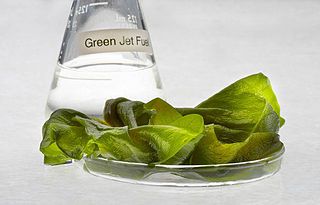The Dubious Practicality of Algae as Fuel

My concerns about algae are not theoretical, but practical. Yes, the little guys provide the potential to harvest 30 – 50 times more energy from the sun than any terrestrial plant, and yes, they can be grown on non-arable land with non-potable water. The problem occurs when you take this out of the laboratory and into the real world. Historically, the logistics of making this happen effectively and repeatedly have been anything but inspiring.
Here’s another practical consideration – probably more lethal to the enterprise of scalable algae than the technological considerations noted above: economics. If this is going to work, it’s going to take an enormous amount of resources: money, people, and time, and no private sector organization has these luxuries. But will such an investment come from the government? Not a chance.

The easiest way to get a grasp of it is to try to grow some algae yourself: Get a “recipe” online for the ideal amount of nutrients (you’ll want them as chemically pure additives for your water, as dumping raw fertilizer into the water will cloud the water and make it impossible for the algae to get sunlight).
Then fill an aquarium with water, add the nutrients, balance the pH, and maybe add some algae. If the pH changes, the algae production drops. If you get too much algae without filtering it, the dead algae absorbs the sunlight and it causes the algae production to drop. If your nutrient balance changes, it causes the algae production to drop. Slight differences in temperature can dramatically alter production rates, without adding CO2, no new algae can grow, but adding CO2 makes the water acidic and causes production to drop. if the sun is too bright, the production will drop, but a slight decrease below optimal in solar intensity will cause productivity to plummet… etc… If too much of the algae is removed from the water you could kill it off entirely (if the sunlight happens to be too bright)… etc… Then you have to watch boil-off in the shallow pool (effective sunlight only penetrates ~2-3 inches, the rest of the water is wasted).
So you have to constantly filter enough to allow clear sunlight into the algae-water, and you have to constantly add more chemical nutrients, and you have to balance the pH while adding more acid (CO2). Not easy.
The happy talk about algae producing 1000’s of times more per acre of land than land based plants is rubbish. They’ve poured tens of millions apiece into hundreds of projects, and never had a project that out-produced a corn field in terms of gallons of biofuel/acre/year.
So it’s extremely expensive, and extremely difficult.
But, what makes the idea of algae ludicrous is the enormous energy that is required to separate and dry the algae. There are thousands of issues which throw out the notion that this could ever be practical (above was but a small fraction)… but the issue of filtering out the algae and creating good growing conditions for it immediately shift the project from “hard” to “absurd”.
Most people who are fascinated by algae have had some experience with either fish-tanks or swimming pools… in which the constant problem is trying to get RID of algae… The idea that something is so hard to stop growing mush surely mean that it would be easy to grow in volume. The problem there is understanding how little it takes to make water seem opaque and green. If you were to leave off all algaecides and chlorine in a reasonably-sized swimming pool (~20,000 gallons), it would turn into a smelly swamp in about a week (midsummer). Surely that shows tremendous production of algae! You can’t even see the bottom of the pool in the 3′ deep section! It’s all green soup!!
But if you were to actually filter the entire body of water of that pool you’d have ~3 cups of wet algae, which would dry out into ~ a cup full of dry algae, only ~1/3rd of which would be lipid mass. So, how much energy would it take to filter a full 20,000 gallons of water, then boil off about 2 cups of water to get dry algae, which then would have to be crushed to squeeze out the oil?
There is absolutely no chance whatsoever that the trick could be pulled off using less than the energy in 1/3 of a cup of plant oil. It would be difficult to pull it off with 100 times that amount of energy.
Tanx! 🙂